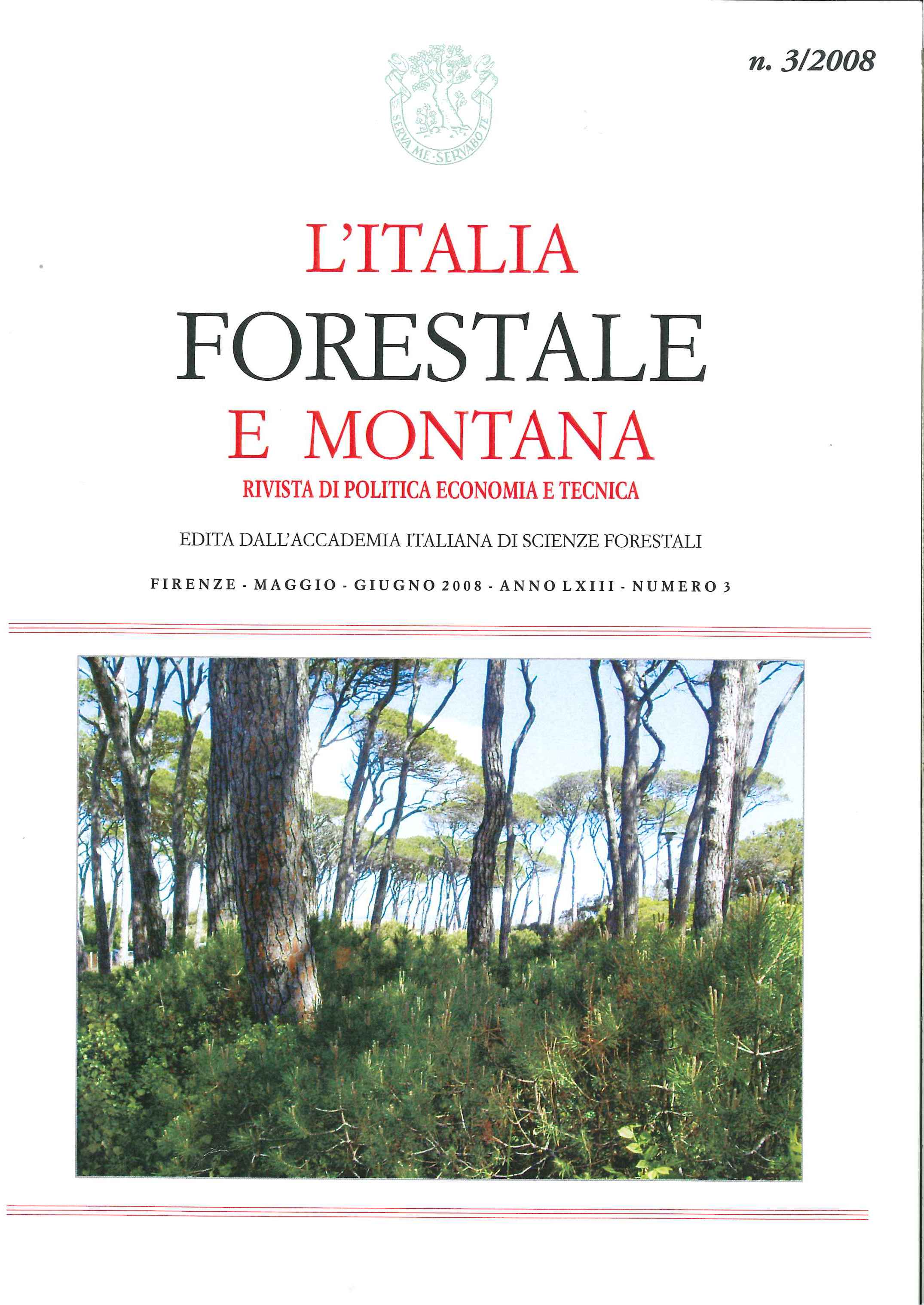Published
2008-06-23
Keywords
- EEC Reg. no. 2080/20,
- forest stands,
- phytopathological condition,
- valuable broadleaved trees,
- cultural practices
Abstract
This paper reports the results of a survey carried out in order to assess the occurrence and incidence of biotic and abiotic diseases in forest stands planted in Apulia (Southern Italy) according to the EEC Reg. 2080/92. The most frequently recorded diseases were: the anthracnose of walnut tree caused by Marssonina juglandis, the oak powdery mildew caused by Microsphaera alphitoides, cankers induced by Diplodia corticola and leaf necroses on cherry trees caused by Blumeriella jaapii. As for insect damages, the most frequent were micro-wounds caused by aphids inducing sooty mould. Finally, cultural practices such as pruning and ploughing, if carried out improperly, can cause bark wounds and lesions, thus predisposing penetration of fungal pathogens. To promote rooting and to improve plant life and resistance to pathogens, native healthy plants and proper cultivation techniques are suggested, especially in the first 4 to 5 years after planting. Constant monitoring may limit or prevent plant exposure to the most harmful diseases, uncontrolled spreading of pathogens and severe damages.


